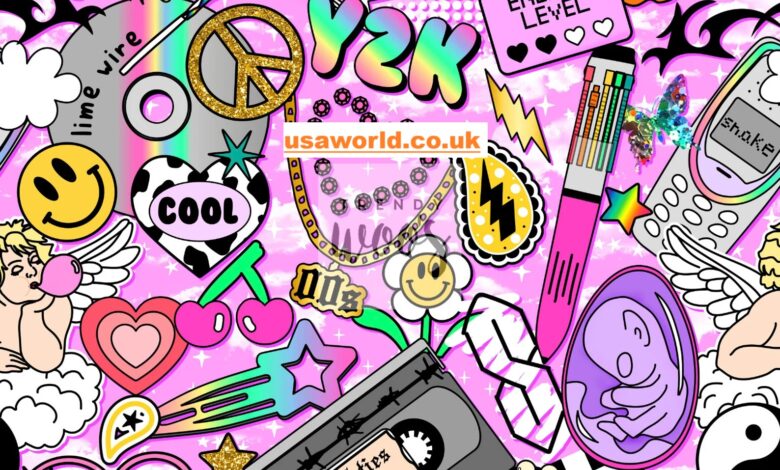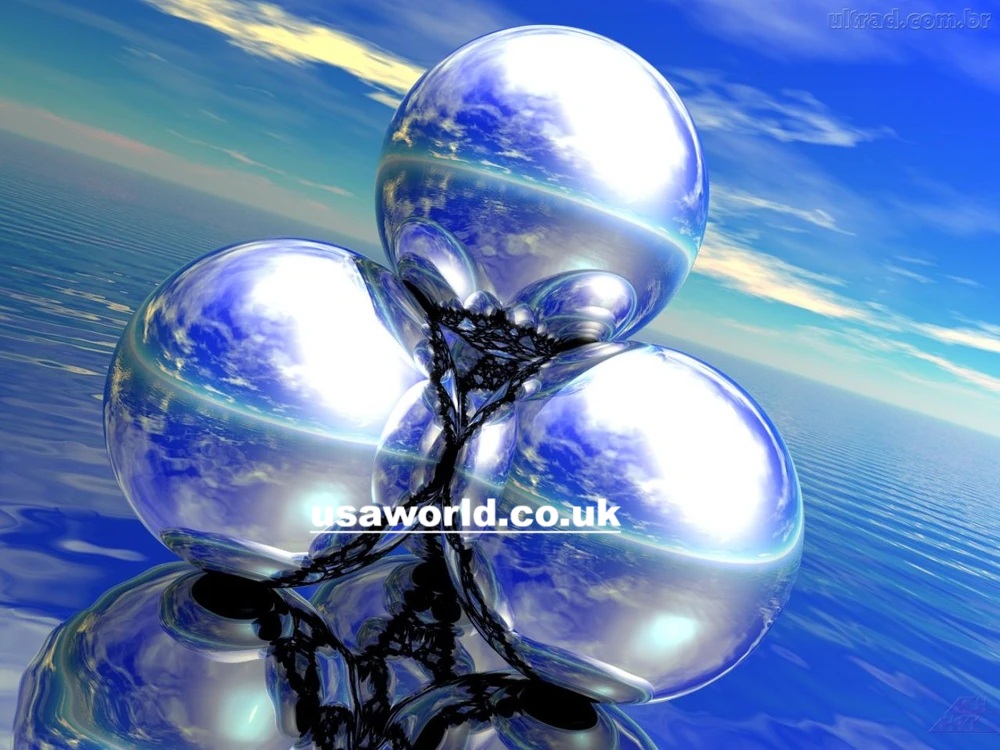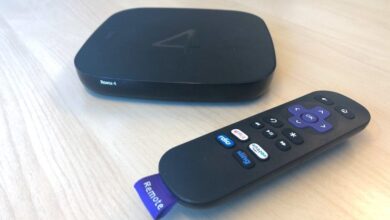Y2K Aesthetic: A Nostalgic Revival of Futuristic Dreams

Introduction: Defining the Y2K Aesthetic
The term Y2K aesthetic refers to a visual and cultural style that originated around the late 1990s and early 2000s, flourishing during the transition from one millennium to the next. It was a time when the internet was expanding, technology was advancing at a dazzling pace, and society as a whole was enchanted by the promise of a futuristic digital age. This aesthetic captures the mixture of optimism, experimentation, and slight anxiety about technology that defined that period.
Unlike other nostalgic revivals that simply borrow from the past, the Y2K aesthetic is fascinating because it feels futuristic even when looked at today. Its visuals often include metallic textures, iridescent surfaces, holographic materials, cyber-inspired graphics, and a love for bold, unconventional fashion choices. From glossy lips to shiny vinyl pants and neon-colored gadgets, the Y2K look was — and still is — unapologetically bold.
This aesthetic is not just a visual trend but a cultural phenomenon, connecting fashion, design, music, and digital art. Its resurgence today is partly due to Gen Z discovering and reimagining styles from the early 2000s through platforms like TikTok and Instagram. For them, the Y2K aesthetic represents both nostalgia for an era they did not fully live through and a refreshing alternative to minimalist trends.
To understand the Y2K aesthetic is to understand a moment in time where culture, optimism, and technology merged into a bold visual statement. It is equal parts playful and futuristic, embodying the human desire to look ahead while also embracing the joy of excess and experimentation.
Origins of the Y2K Aesthetic: The Digital Dawn

The Y2K aesthetic was born out of a unique cultural context. As the world approached the year 2000, there was widespread anticipation — and a touch of fear — about what the new millennium would bring. The so-called “Y2K bug,” a computer glitch that some feared would crash global systems, heightened awareness of technology’s growing presence in everyday life. At the same time, optimism about the internet, cell phones, and space exploration fueled a sense of wonder.
Fashion designers, advertisers, and musicians tapped into this excitement. Brands like Diesel, Versace, and Dior experimented with metallics, shiny fabrics, and futuristic cuts. Music videos from artists like Britney Spears and Destiny’s Child showcased cyber-inspired visuals, while tech products like the iMac G3 in translucent colors or the portable CD player with metallic finishes became cultural icons. These everyday items shaped the aesthetics of a generation.
What made the Y2K look stand out was its fusion of digital culture with fashion and lifestyle. Websites, chatrooms, and video games influenced visual choices. Pixelated graphics, glowing neon lines, and holographic typography made their way into advertising and media. Unlike the sleek minimalism that would dominate the late 2000s, Y2K style celebrated maximalism, irregularity, and playfulness.
This early phase of the Y2K aesthetic represented society’s first attempt at translating digital excitement into cultural design. It was futuristic yet approachable, bold yet fun, and above all, reflective of the optimism tied to technology’s promises.
The Visual Language of Y2K: Colors, Textures, and Styles
One of the defining features of the Y2K aesthetic is its unmistakable visual language. This was not an era of muted tones or subtle details; instead, it was an explosion of vibrancy and futuristic textures. Bright pinks, metallic silvers, neon greens, and holographic purples dominated the fashion and design landscape. Even accessories like flip phones, handbags, and sneakers adopted these color schemes, making everyday life feel slightly more futuristic.
Textures played a significant role in establishing the aesthetic. Vinyl, latex, metallic fabrics, and shiny plastics reflected light in ways that screamed modernity and confidence. Clothing often combined unconventional pairings, such as denim with rhinestones or sheer fabrics layered with bold prints. Accessories like butterfly clips, chunky sunglasses, and platform sneakers became the finishing touches to outfits that embraced fun over subtlety.
In graphic design and digital art, the Y2K aesthetic leaned heavily on gradients, chrome effects, and bubbly 3D typography. The internet boom gave rise to experimental websites full of glittery GIFs, pixel art, and colorful backgrounds. While these might look chaotic by today’s design standards, they perfectly captured the spirit of experimentation and the thrill of exploring a new digital frontier.
The visual language of Y2K was, in many ways, an act of rebellion against the restrained, neutral-toned minimalism that came later. It encouraged boldness, uniqueness, and the idea that self-expression should not be muted but amplified. This visual DNA is what makes the Y2K aesthetic so instantly recognizable, even two decades later.
Cultural Influence: Music, Media, and Lifestyle
The Y2K aesthetic cannot be separated from the cultural forces that shaped it. Music, in particular, played a crucial role. Pop stars of the late 1990s and early 2000s — Britney Spears, NSYNC, Destiny’s Child, and Christina Aguilera — became style icons who embodied the futuristic, playful aesthetic. Their music videos featured chrome backdrops, space-age outfits, and neon-lit dance floors that became synonymous with the era.
Television and film also helped embed Y2K style into popular culture. Movies like The Matrix with its cyberpunk visuals, or Josie and the Pussycats with its hyper-glam styling, showcased different sides of the aesthetic. Even children’s shows and cartoons leaned into futuristic themes, presenting technology as both exciting and stylish. Media consumption during this time shaped how people dressed, decorated their rooms, and even designed their MySpace profiles.
Beyond entertainment, the Y2K aesthetic influenced everyday lifestyle choices. Gadgets like Tamagotchis, Game Boys, and early flip phones were designed with colorful exteriors and playful features, making technology not just functional but fashionable. Bedrooms were often decorated with glow-in-the-dark stars, beaded curtains, and shiny posters — extensions of the Y2K world.
In many ways, the Y2K aesthetic reflected the mood of society at large. It was hopeful, experimental, and full of curiosity about what the future might hold. It was also accessible, as anyone could embrace the style with a shiny accessory, bold makeup choice, or a metallic finish. Its cultural influence created a generation-wide embrace of futuristic optimism.
The Modern Revival: Why Y2K is Back
Fast forward to today, and the Y2K aesthetic is experiencing a major revival. Gen Z, in particular, has adopted and reinterpreted it with enthusiasm. Social media platforms like TikTok and Instagram have amplified the trend, as young creators experiment with styling Y2K-inspired outfits, editing photos with retro filters, and designing digital art that captures the early 2000s vibe.
One reason for this revival is nostalgia. For Millennials, Y2K represents a return to their formative years, filled with cultural touchstones like early internet experiences and iconic pop music. For Gen Z, however, it represents an exotic past they never fully experienced. Wearing butterfly clips, low-rise jeans, or glittery eyeshadow feels like participating in a time capsule of playful freedom.
Another factor is the contrast it offers to current fashion trends. After years of minimalist styles dominated by neutral palettes, Y2K’s loud and unapologetic designs provide a refreshing break. The maximalism of Y2K resonates with younger generations who value individuality and self-expression. It feels authentic, daring, and fun — qualities often missing in more restrained aesthetics.
This revival is not limited to fashion. Graphic designers, musicians, and brands are revisiting Y2K-inspired visuals, incorporating holographic effects, futuristic fonts, and digital nostalgia into their work. The aesthetic is being modernized, blending retro inspirations with today’s technology and sensibilities, creating a fascinating cycle of cultural reinvention.
Conclusion: The Timeless Appeal of Y2K
The Y2K aesthetic is far more than just a passing fashion trend. It represents a cultural snapshot of a moment when society was both anxious and hopeful about the digital future. Its bold colors, shiny textures, and futuristic vibes captured the optimism of an era where technology was seen as a promise rather than a problem.
Its revival today demonstrates its timeless appeal. Younger generations see it as an opportunity to embrace individuality, creativity, and nostalgia all at once. Unlike minimalism, which can feel restrictive, the Y2K aesthetic celebrates bold self-expression and the joy of experimenting with identity.
Perhaps the reason it continues to resonate is that it captures a universal desire — to imagine a brighter, shinier, and more exciting future. Even two decades later, Y2K remains a reminder that fashion and culture can dream big, and that style, at its best, can make everyday life feel a little more futuristic.
In the end, the Y2K aesthetic isn’t just about clothes or design; it’s about a mindset. It’s about optimism, playfulness, and the courage to look forward with excitement. That is why, even today, the world is still captivated by the shimmering charm of Y2K.
Further insights and Gain more perspective from…
Augusta Precious Metals Lawsuit



